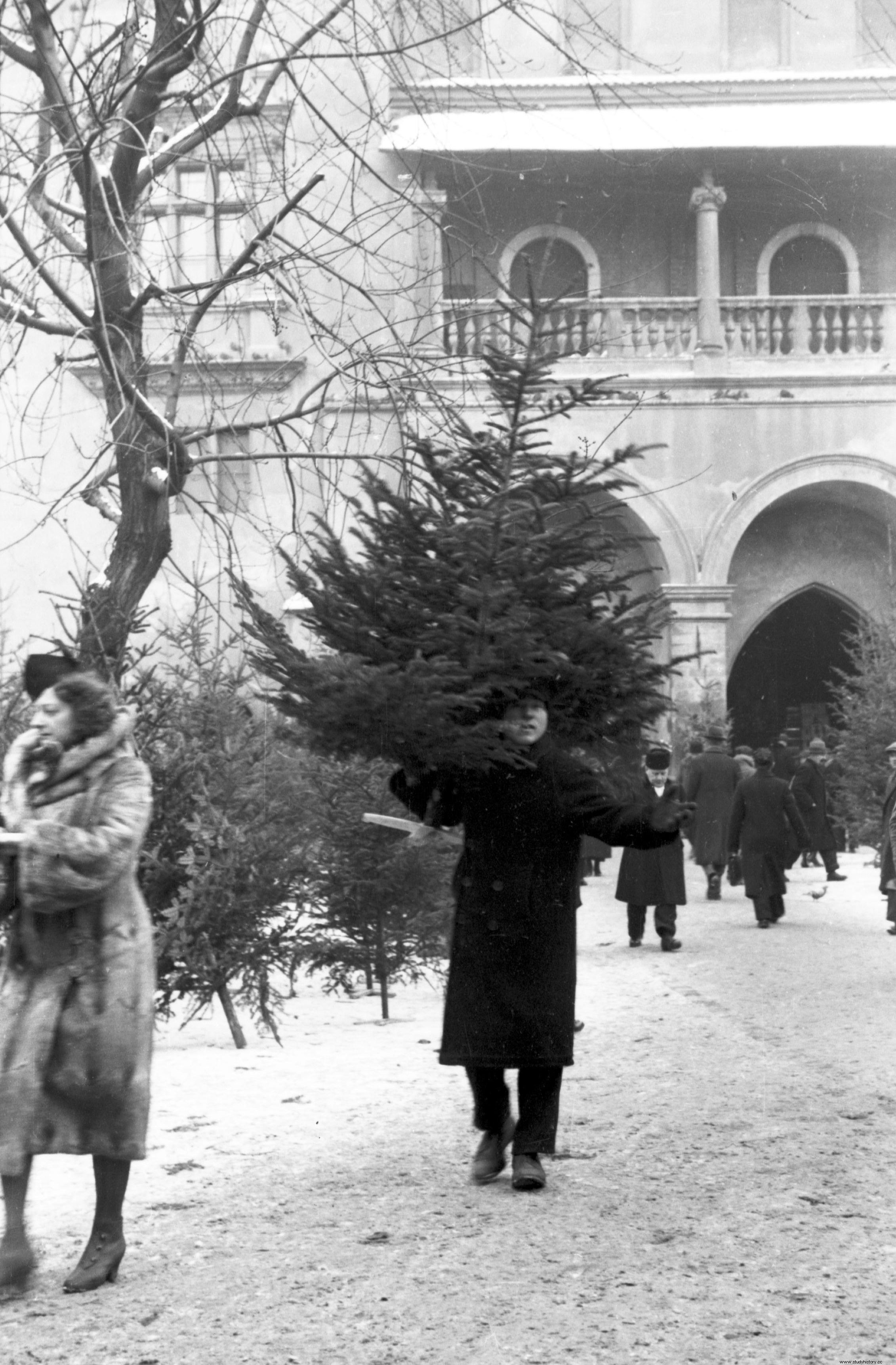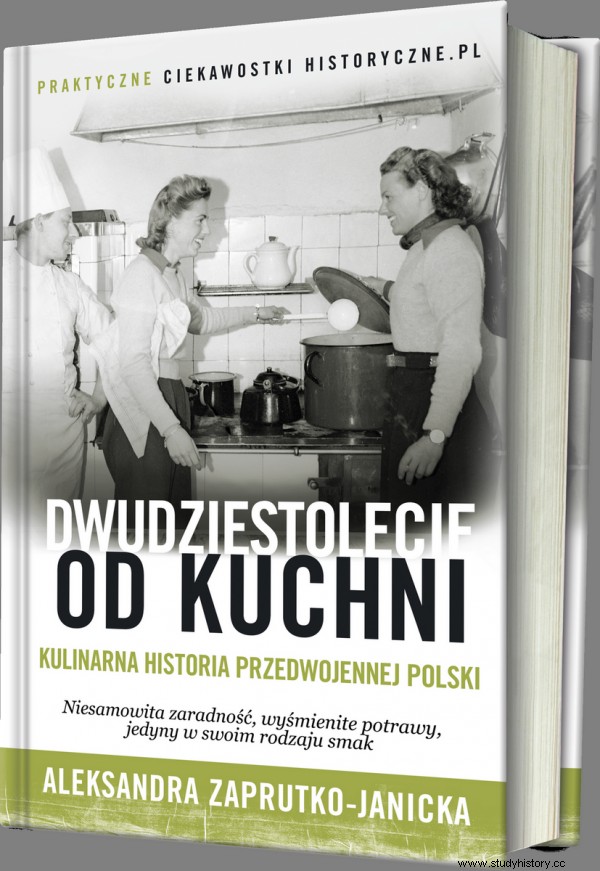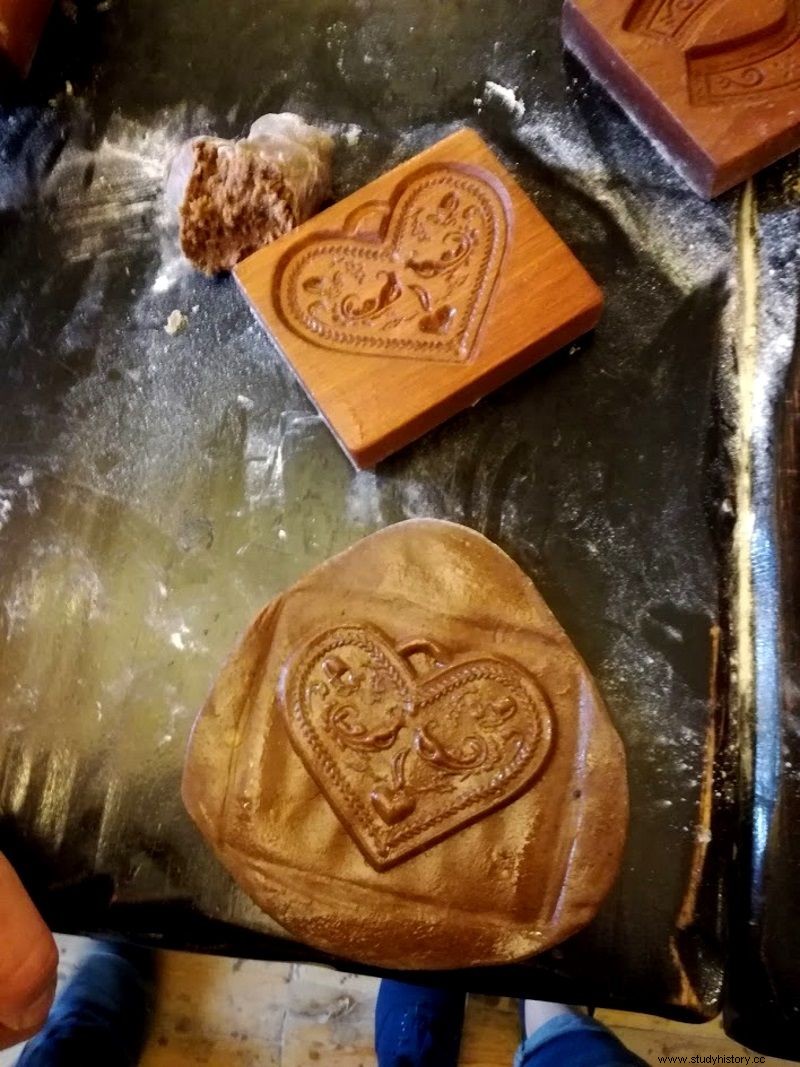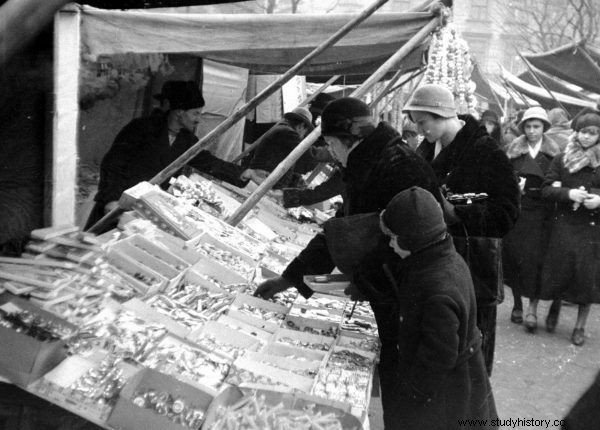We are attacked by Christmas music from the radio, and wherever we look, Santa Clauses, dressed as in a Coca Cola advertisement, grin at us. However, before we fall into the cooking, baking and cleaning frenzy, it is worth stopping and checking how our great-grandmothers prepared for Christmas.
Preparations for Christmas began long before the first Christmas. In fact, some ingredients were gathered in the fall to add splendor to the Christmas Eve table. Among them were then carefully stored apples and nuts.
The closer to December, the louder the noise began to reign in the kitchen. In wealthier homes, there was a mandatory pig slaughter, followed by the production of all kinds of cold cuts and preserves. Thanks to the December frosts, you didn't have to worry about storing the meat. It was enough to hang it in a place with fresh air and there was no risk that animals attracted by the smell would get to it.
As there were baked babes at Easter, Christmas absolutely could not do without gingerbread. These aromatic cakes have been present in Polish cuisine for centuries and are traditionally associated with this period of the year. Maria Disslowa in the book How to cook she emphasized that the aforementioned dough should rather be called gingerbread, due to the fact that honey is its main ingredient. As the cook emphasized, there were plenty of housewives who carefully guarded recipes that made their gingerbread cookies absolutely unrivaled.

The Christmas tree has already been bought. Photo from the Market Square in Krakow in 1932 (photo:NAC, public domain)
You had to jump around in the kitchen around the preparation of this baking, just like in the case of women. The perfectly measured amount of conditioners was also extremely important (soda, potash or ammonia salt were used). If it was too small, the dough came out hard and not risen; if it was too big, it ran away from the mold, then fell spectacularly. The oven temperature was also of great importance.
Gingerbread alchemy
Nowadays, in the vast majority of cases, it takes just a few moves and we already have the appropriate oven parameters set. We don't have to bring wood, heat up the stove and watch over baking in a tightly closed nursery. Our great-grandmothers, while baking a cake, had to constantly pay attention to the right temperature, and before they could get into practice, they would burn more than one cake. The oven also had to be handled with great care.
Too high a temperature at the beginning of baking causes a hard crust which prevents the dough from rising. Too small is also not appropriate, as Disslowa herself emphasized:
When the cold bake does not rise, the dough will be hard and sappy. It is good to bake gingerbread after bread, it goes the best then. A good gingerbread should be plump, sweet and reasonably spicy. Before baking, the dough is fermented for several hours, and it may ferment for several weeks or even months. […] In Poland, it was customary to give a maid as dowry a bowl of gingerbread dough, from which she could draw and bake gingerbread for a long time.

Incredible resourcefulness, delicious dishes, unique taste. Learn about the female history of pre-war Poland in the book "Twenty years from the kitchen" by Ola Zaprutko-Janicka.
Disslow in the matter of the mentioned fermentation of the dough is not groundless. In the book, he gives many recipes according to which the kneaded dough must wait its own before baking. For example, "Hygienic Gingerbread" made of half a liter of honey, 60 decagrams of sugar, one eighth liter of water, 5 eggs, half a teaspoon of baking soda, 5 decagrams of potash, half a kilogram of rye flour and 7 decagrams of wheat flour.
Half a kilo of sugar should be boiled with the specified amount of water, and the honey should be browned personally. Then pour the dissolved sugar into the honey, boil it again and set aside for 5 minutes, then add the potash and stir, making sure that the mass does not boil over. Pour the flour into the hot honey and use a wooden spoon to mix it into the dough. In a separate vessel, beat the eggs with the remaining sugar and baking soda until foam, add to the dough, stir. Then, as Disslowa recommends, "knock it out thoroughly, leave it alone for 8 days, and then knead gingerbread in various shapes".
Before the last Christmas, I decided to try the ripening gingerbread cake and I absolutely do not regret it. The recipe for Old Polish gingerbread, which I used, provided for aging for a good few weeks. Some recipes recommend setting the dough in the area of Andrzejek, while mine required maturing for six weeks. So, on Saint Martin's Day, when Poles eat the famous croissants, I prepared the dough and left it to mature. And I swear by the memory of the best 19th-century cook, Lucyna Ćwierczakiewiczowa:when I baked them a few days before Christmas, it turned out to be the best gingerbread I've ever eaten.

Gingerbread is one of the most traditional Polish cakes. Here is a demonstration of its production at the Living Museum of Gingerbread in Toruń (photo:private archive)
The very idea of this cake is brilliant. We prepare them at a time when we spend long autumn evenings at home and the thought of Christmas bustle is very distant. When the pre-Christmas race begins, just preheat the oven, take out and shape the dough, then bake it and finally spread it with jam and pour chocolate or frosting. It is worth setting a double portion, because such gingerbread tends to disappear at an alarming rate. Our great-great-grandmothers, who invented this cake centuries ago, and our great-grandmothers who passed the recipes to the next generations, knew exactly what they were doing.
Big cleanup
Just before Christmas, all the brushes and cloths that could be found at home were put to work. There was a time of the big cleanup. Curtains and curtains disappeared from the windows, and holy pictures from the walls. The ladies scrubbed everything with their own hands or, if they hired help, the maid did it. In the thoroughly cleaned rooms, turpentine was clearly felt, which was used to clean floors, walls and leather furniture.
The preparation of decorations before Christmas was as important as the preparation of aromatic spicy baking. Today, unfortunately, we are largely inspired not by native traditions, but by pictures from American Christmas films that we watch lying on sofas with bellies filled with fried carp.

And for the Christmas tree you need to buy beautiful shiny baubles. Photo from 1932 (photo:NAC, public domain)
Today, sitting at the computer, we can buy the power of Christmas decorations in various styles in a few clicks, from modest minimalism to à la figurines Las vegas. Similarly, stationary, Christmas decorations of your choice, depending on the color. Before the war, yes, many homes bought colorful blown glass baubles and shiny foil ornaments, but most of the Christmas tree toys were made by hand. Children who glued them with the help of adults made it especially fun from colored paper, tissue paper, straws, nuts, gingerbread, apples and, which is typical only for Poland, from colorful wafers.
The very idea of decorating a Christmas tree appeared on the Vistula relatively late, only at the turn of the 18th and 19th centuries, and it began to gain popularity somewhat sluggishly. First, the townspeople and the intelligentsia adopted this custom from the Germans, and with time the range of its occurrence widened. The Christmas tree appeared in the villages only at the turn of the 19th and 20th centuries, but it was rare in the Borderlands in the interwar period. Many a vigorous matron from Równe or Baranowicz would scoff at a spruce planted upright and decorated with baubles, contemptuously saying that it was "crown-making inventions". After all, a truly Polish Christmas decoration was the podłaźniczka.
The Old Polish tradition called for a house to be decorated for a Worthy Christmas with the cut tip of a conifer tree or its beautifully green branches. In no case did they appear in a stand or a vase, but were hung high, from the ceiling and dressed with personally prepared decorations. In cities it was difficult to implement, but two things could not be missing in manor houses and country cottages - hay and a sheaf of undisturbed grain. The first was to symbolize a poor stable and ensure an abundance of hay; the second to herald a rich harvest.
Sources:
The article is based on the sources and literature used by the author while working on the book "Twenty years from the kitchen. Culinary history of pre-war Poland ” as well as the information contained in cookbooks and the period press.
